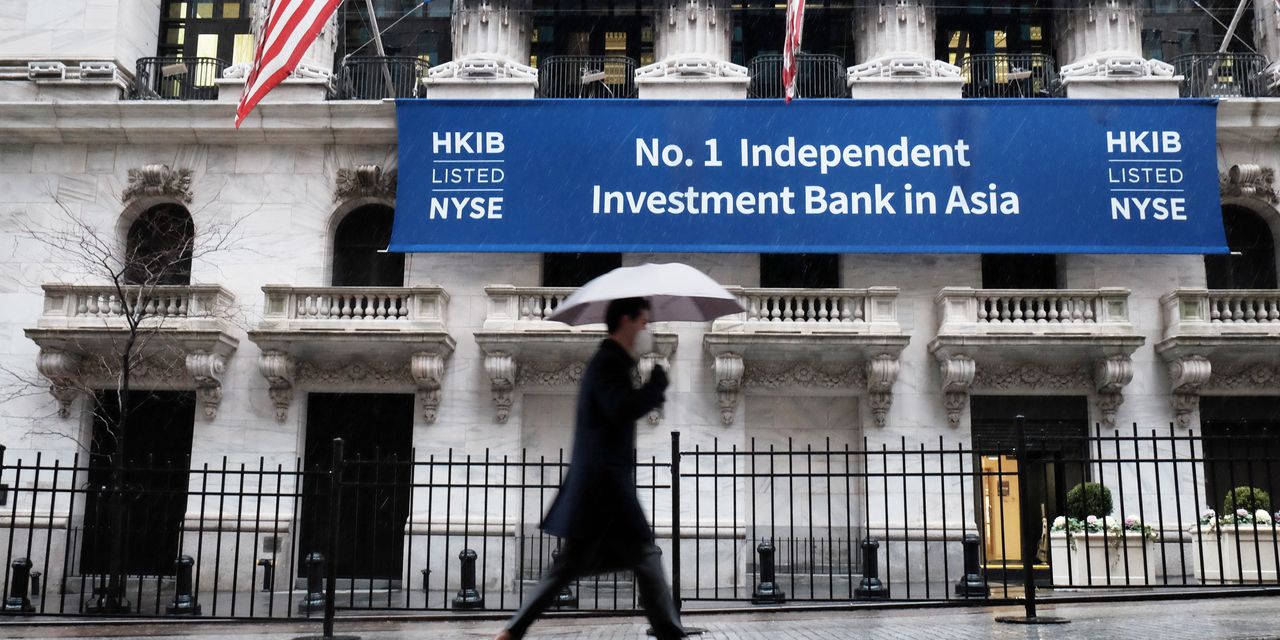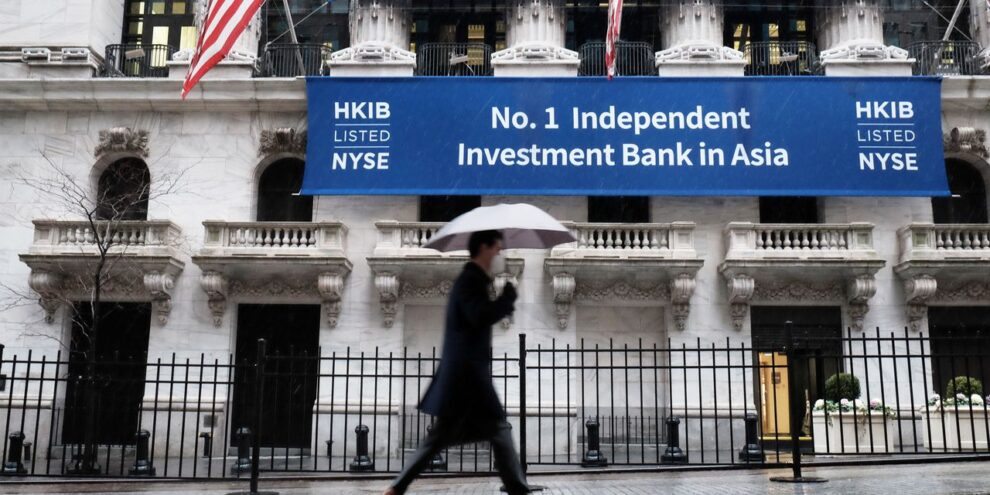
U.S. equity gauges on Friday ended sharply lower, capping a withering week for investors highlighted by the biggest weekly slide for the S&P 500 and the technology-laden Nasdaq Composite since March 2020.
How are stock indexes trading?
- The S&P 500 SPX, -1.89% lost 84.79 points, or 1.9%, to close at 4,397.94.
- The Dow Jones Industrial Average DJIA, -1.30% shed 450.02 points, or 1.3%, to 34,265.37.
- The Nasdaq Composite Index COMP, -2.72% gave up 385.10 points, or 2.7%, breaching a psychological round-number level at 14,000 to close at 13,768.92.
- For the week, the Nasdaq Composite logged a 7.6% drop, which is its worst such performance since March 20, 2020. The S&P 500 booked a 5.7% decline, also for its steepest such fall since March 2020, and the Dow logged a 4.6% weekly slide for the holiday-shortened week, its worst since Oct. 30, 2020.
What’s driving the markets?
It was the week that was on Wall Street, a holiday-abbreviated stretch of trade that might have felt like an epoch for bullish investors.
A bearish pall is being cast over the market and volatility has become the new normal, with investors stomaching notable intraday prices swings to conclude a withering week.
The S&P 500 notched its third straight weekly loss, according to FactSet data. Nearly all the S&P 500’s 11 sectors ended lower for the day, led by communication services SP500.50, -3.88%, down 3.9%, and consumer discretionary SP500.25, -3.10%, off 3.1%. Consumer staples SP500.30, +0.02%, seen as a defensive play, were the exception, finishing flat on the day.
The stats were worse for the Nasdaq Composite, which booked its fourth straight weekly loss, after a sixth straight daily decline, marking its longest such losing streak since 2012.
Read: ‘Good luck! We’ll all need it’: U.S. market approaches end of ‘superbubble,’ says Jeremy Grantham
After entering correction territory on Wednesday, the Nasdaq Composite has only deepened that rout. The index is down around 15% from its record close in November, nearing the 20% decline from a recent peak that would meet the commonly used definition for a bear market.
Much discussion around the recent bout of weakness in equities has been centered on the rise in yields and the prospect for higher benchmark rates. Markets have been dogged by a bond market selloff and fears of Federal Reserve tightening to combat surging inflation, and that has particularly hit rate-sensitive technology stocks.
Both Wednesday and Thursday saw indexes log gains early in the day only to surrender them later and on Friday losses deepened into the close, delivery another gut-punch for optimistic investors.
A bumpy start to earnings season also has dented investor confidence, with a string of downbeat bank results, and gloom about Netflix NFLX, -21.79%, after the streaming service reported far weaker than expected subscriber growth numbers.
“Thus far in January, upward earnings revisions tumbled to 58.6% from 71.8% in December and 70.7% in November, versus a peak of 82.3% in August,” analysts at Citigroup wrote.
“Peaking of revision momentum could be a catalyst for market weakness,” the Citi analysts wrote.
Opinion: Netflix admits that it is time to grow up, but Wall Street isn’t happy about it
Peter Cardillo, chief market economist at Spartan Capital, said lowered guidance from major banks has been a key factor. “Nevertheless, we are at the beginning of the earnings season and remain confident that overall grades will bolster the market’s fundamentals, thereby softening the blow of rising yields,” he said.
The yield on the 10-year Treasury note TMUBMUSD10Y, 1.762% fell Friday to end below 1.75%, but has soared this month, from 1.5% at the start of January.
Meanwhile, cryptocurrencies came under pressure, with bitcoin BTCUSD, -2.92% tumbling below a key support level at $40,000, dragging the sector lower. The losses come a day after Russia’s central bank proposed banning the use and mining of cryptos.
Market Extra: How a Russian invasion of Ukraine could trigger market shock waves
The economic calendar is light Friday, featuring only the Conference Board’s December leading economic index, which rose 0.8%, in line with forecasts and signaling steady growth even as the spread of the omicron variant of the coronavirus nibbled at economic activity.
Which companies are in focus?
- Peloton Interactive PTON, +11.73% shares climbed 11% Friday after Chief Executive John Foley pushed back against media reports claiming a production halt and layoffs that triggered a 23% plunge during Thursday’s regular trading session.
- Netflix’s stock ended down 22% on Friday, while shares of rival Walt Disney & Co. DIS, with its Disney+ and Hulu services, closed off 6.9% and streaming-device maker Roku ROKU ended down 9.1%.
How are other assets trading?
- The ICE U.S. Dollar Index DXY, -0.10%, a measure of the currency against a basket of six major rivals, was down 0.1% but up 0.5% on the week.
- Gold futures GC00, -0.35% fell 0.6% to settle at $1,831.80 an ounce, but marked a weekly gain of 0.8%, and crude-oil prices continued to pullback from 7-year highs, with U.S. crude CL00 down 0.5% at $85.14 a barrel on the New York Mercantile Exchange, trimming the U.S. benchmark’s weekly advance to 2.2%.
- The Stoxx Europe 600 SXXP, -1.84% fell 1.8% and booked a 1.4% weekly slide, while London’s FTSE 100 UKX, -1.20% closed 1.2% lower and posted a 0.7% drop for the week.
- The Shanghai Composite SHCOMP, -0.91% closed down 0.9% and ended barely in positive territory for the week; China’s CSI 300 000300, -0.92% closed off 0.9% but logged a 1.1% weekly advance, and Japan’s Nikkei 225 NIK, -0.90% fell 0.9%, with a 2.1% fall on the week.











Add Comment